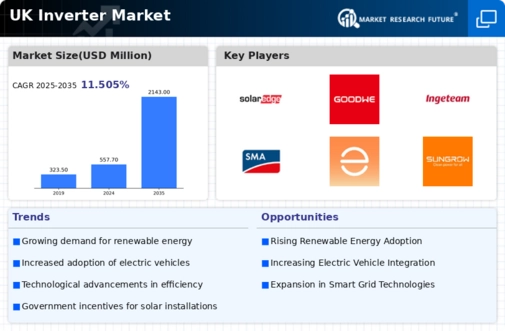The UK Inverter Market has witnessed significant dynamics in recent years, primarily influenced by the increasing adoption of renewable energy sources, particularly solar power. As the demand for sustainable energy solutions rises, various companies have made their mark by innovating and introducing technologically advanced inverter systems that cater to diverse consumer needs. This sector is characterized by a mix of established manufacturers and emerging players striving to innovate in efficiency, performance, and integration with energy storage systems.
The competitive landscape is shaped by factors such as product quality, technological advancements, pricing strategies, and customer service which collectively define the market positioning of various firms within this vibrant ecosystem.SolarEdge Technologies has solidified its presence in the UK Inverter Market by focusing on optimizing energy production and providing advanced inverter solutions.
The company’s strengths lie in its innovative technology, which includes power optimizers and end-to-end solar solutions that enhance system performance. SolarEdge Technologies emphasizes reliability and energy independence, appealing to both residential and commercial customers across the UK. The company's strategic partnerships and strong distribution channels have further reinforced its market presence, allowing it to gain a competitive edge.
SolarEdge also focuses on user-friendly monitoring systems that provide customers with real-time insights into their energy production and consumption, thereby enhancing customer experience and satisfaction.Goodwe has emerged as a significant player in the UK Inverter Market by delivering high-quality, reliable, and versatile inverter solutions. The company specializes in a diverse range of products, including single-phase and three-phase inverters used in residential and commercial settings.
Goodwe's strengths lie in their commitment to innovation, as evidenced by their focus on developing products that utilize cutting-edge technology. The company has actively expanded its market presence through strategic partnerships and collaborations, enhancing its distribution network in the UK. Goodwe is recognized for its energy storage solutions, providing customers with options for self-consumption and grid independence. The company has engaged in mergers and acquisitions to broaden its capabilities and product offerings, reinforcing its position in the market while continuously seeking to improve and adapt to the evolving demands of the renewable energy sector in the UK.




















Leave a Comment